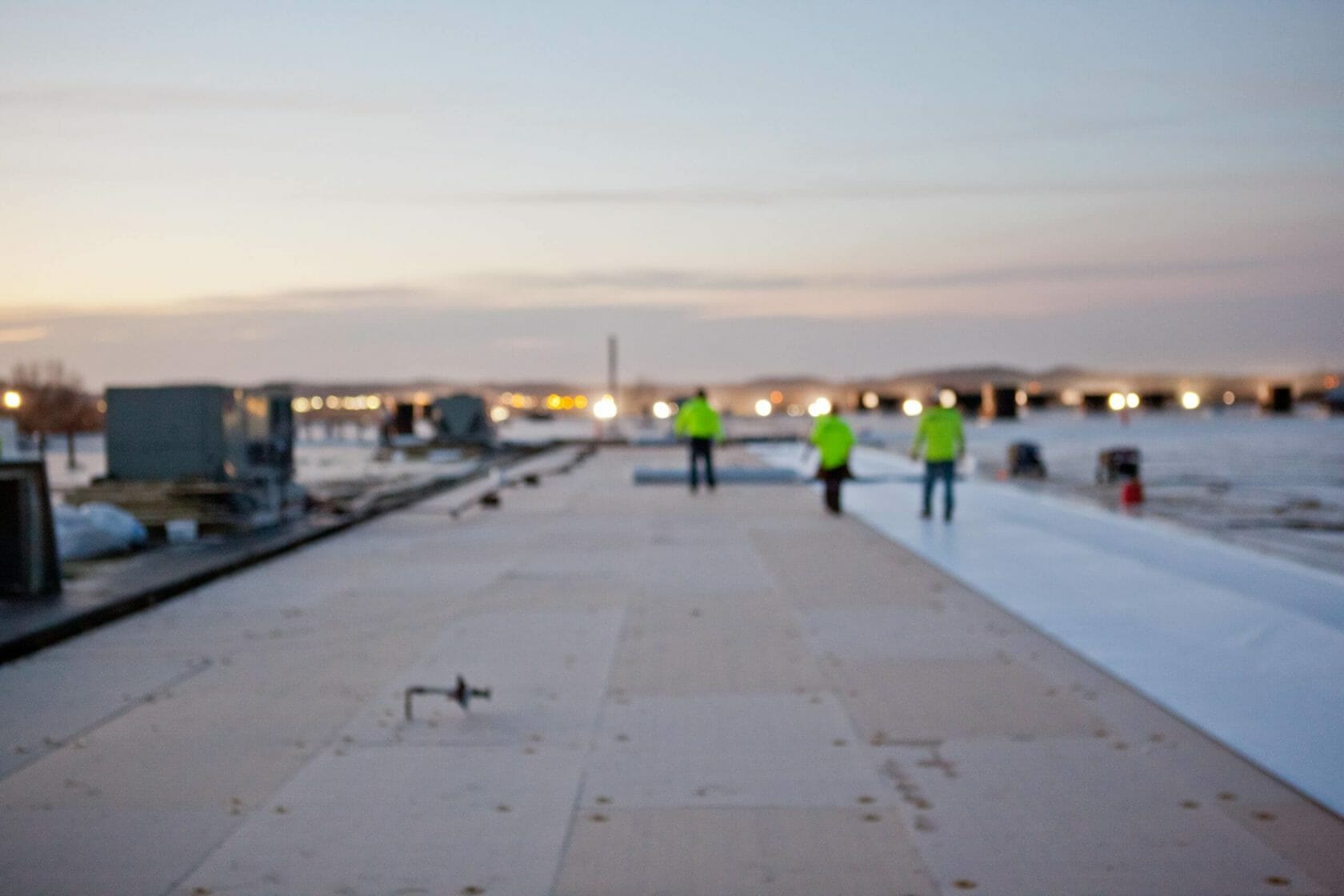It can’t be said enough: preventative maintenance is the best way to protect a commercial roof and make it last longer. Most major roof repairs can be prevented by following this important guide, but if you’ve lapsed on your maintenance or inherited roof problems after buying a building you may need to consider a roof recovery.
A roof recovery system uses a new membrane over the existing roof. These systems can be installed on roofs with damage, but only if the structural integrity of the roof deck is still sound. For many leaks and other types of damage, roof recovery may be the best option, but there are some things anyone considering a major change to their roof should know about.
Roof recovery systems are more affordable:
Reroofing requires stripping every part of the existing roof down. You have to tear off the insulation, membrane, and flashing all the way down to the roof deck. This is a time-consuming and expensive process. Because roof recovery systems also use the existing insulation and other roof materials, there is less to replace, making it more cost-effective.
Roof recovery systems are considered more environmentally friendly:
By reusing the existing roof materials, less new raw materials go into roof recovery. This isn’t just good for your wallet, but it’s also beneficial for the environment.
The age and amount of damage can limit the effectiveness of a roof recovery system:
Roof recovery systems are cheaper than a reroof, but they aren’t inexpensive. If a roof is already reaching the end of its life or has significant damage, it may be worth the extra money to just get a new roof that will last longer. Though this costs more up-front, it may save money in the long run.
Excessive moisture can make a recovery unviable:
While many types of damage can be papered over with a roof recovery, extreme moisture intrusion cannot. If the insulation or roof structure has gotten wet, putting a new roof over the existing one will only exacerbate the problem. It’s possible to remove moisture from some parts of the roof and replace wet insulation, but it’s important for roofers to use thermal detection to attempt to discover how much of the roof insulation is contaminated. If too much of the roof is wet, it may be more cost-effective to replace the roof.
Consider the roof deck:
Without pulling up the existing roof, it’s impossible to adequately examine the condition of the roof deck. A damaged roof deck will eventually mean that the roof needs to be replaced and can render a roof recovery system ineffective. If there is reason to believe that the roof deck has been damaged, it may be necessary to replace the roof.
Only a roofer can determine if a recovery is appropriate:
The best way to understand if your roof is best suited for a recovery or a replacement is to consult a reputable roofing company. Maxwell Roofing & Sheet Metal, Inc. has decades of experience in both roof recoveries and replacements. To find out more, contact us today.

